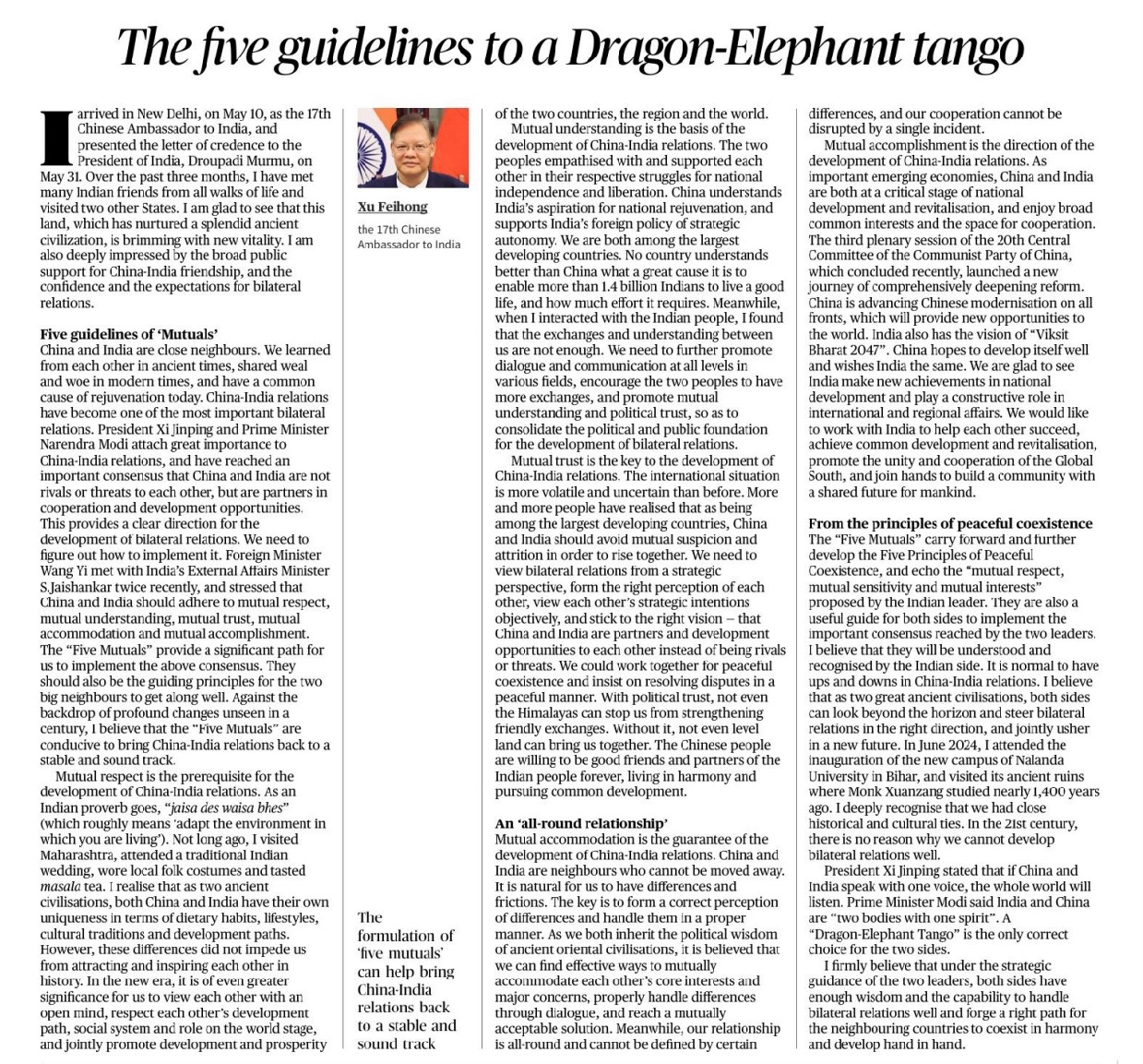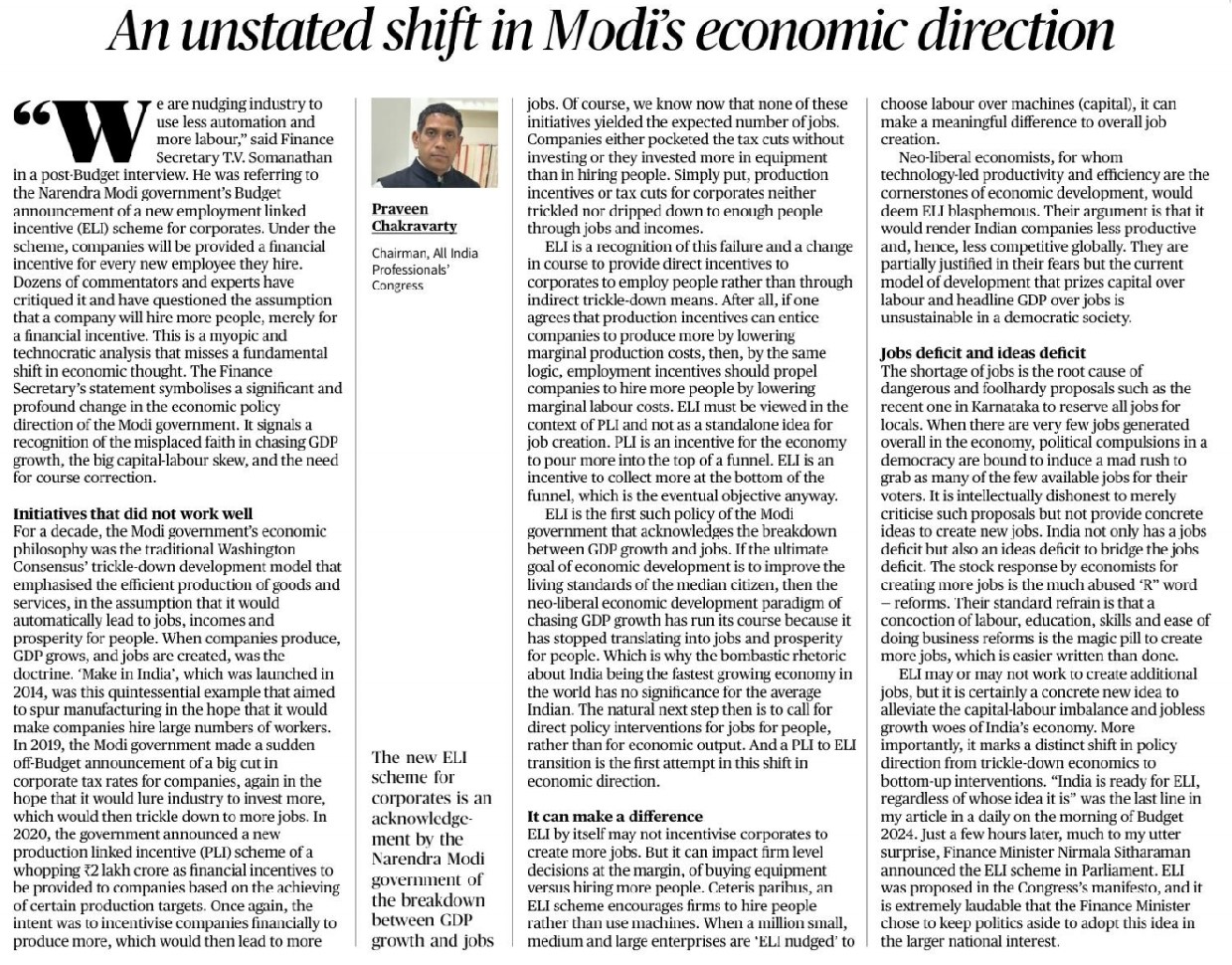Five Pillars Of Cooperation
Introduction
Context: The passage outlines the speech of the 17th Chinese Ambassador to India, emphasizing the need for a “Dragon-Elephant Tango” between the two nations.
Thesis: The Ambassador proposes “Five Mutuals” as the guiding principles for a stable and sound China-India relationship. These principles are rooted in mutual respect, understanding, trust, accommodation, and accomplishment.
- Mutual Respect
Core Idea: Acknowledging each other’s uniqueness and sovereignty is crucial.
Elaboration:
- Both nations possess distinct cultural, social, and political systems.
- Respecting each other’s development paths is essential.
- Historical examples of mutual influence highlight the potential for cooperation.
- Mutual Understanding
Core Idea: Building empathy and knowledge about each other is fundamental.
Elaboration:
- Shared history of struggle for independence fosters a common ground.
- Need for increased people-to-people exchanges to enhance understanding.
- China’s awareness of India’s aspirations for national rejuvenation.
- Mutual Trust
Core Idea: Establishing confidence in each other’s intentions is key.
Elaboration:
- Avoiding mutual suspicion and competition is vital for shared progress.
- Emphasizes partnership over rivalry.
- Peaceful resolution of disputes is essential for trust-building.
- Mutual Accommodation
Core Idea: Finding common ground while managing differences is necessary.
Elaboration:
- Acknowledges the inevitability of differences between neighbors.
- Importance of effective diplomacy to address disagreements.
- Emphasizes the comprehensive nature of the relationship beyond specific issues.
- Mutual Accomplishment
Core Idea: Cooperative development is the ultimate goal.
Elaboration:
- Both nations are at a crucial stage of development.
- Shared interests and opportunities for collaboration exist.
- Support for each other’s progress is beneficial for both countries.
Data and Examples
- Historical references to shared cultural and trade ties.
- Economic data on the growing importance of both nations in the global economy.
- Examples of successful bilateral cooperation in areas like trade, investment, and infrastructure.
Conclusion
Summary: The “Five Mutuals” provide a comprehensive framework for strengthening China-India relations.
Significance: These principles can guide the two nations towards a harmonious and prosperous future.
Outlook: The Ambassador expresses optimism about the potential for a successful “Dragon-Elephant Tango.”
Mains Practice Question |
Q. How can the “Five Mutuals” proposed by the Chinese Ambassador contribute to resolving the ongoing border disputes between India and China? Discuss with suitable examples |
GDP and ELI
Introduction
Context: The passage critiques the government’s earlier focus on GDP growth and its shift towards employment-linked incentives (ELI).
Thesis: The introduction of ELI signifies a departure from the trickle-down economic model and marks a more proactive approach to job creation.
- The Failure of Trickle-Down Economics
Core Idea: Government initiatives like ‘Make in India’, corporate tax cuts, and PLI aimed to stimulate growth, but failed to generate adequate jobs.
Elaboration:
- Despite high GDP growth rates, unemployment and underemployment persist.
- Companies prioritized investment in machinery over labor.
- Data on job creation vs. GDP growth can be used to substantiate this point.
- The Shift Towards ELI
Core Idea: ELI represents a direct intervention to boost employment.
Elaboration:
- ELI as a departure from the indirect approach of previous policies.
- Comparison of PLI and ELI: one focuses on production, the other on employment.
- Potential impact of ELI on job creation and income distribution.
- Challenges and Concerns
Core Idea: ELI faces criticism and potential drawbacks.
Elaboration:
- Concerns about reduced productivity and competitiveness.
- Potential for misuse and corruption.
- Need for complementary policies to support job creation.
- The Need for a Broader Approach
Core Idea: ELI is a step in the right direction, but more comprehensive reforms are needed.
Elaboration:
- Importance of education, skill development, and labor reforms.
- Addressing the issue of joblessness through a multi-pronged strategy.
- Role of the government in creating a conducive environment for job creation.
Conclusion
Summary: The shift towards ELI indicates a growing recognition of the employment challenge.
Significance: It represents a potential paradigm shift in economic policy.
Outlook: While ELI is a positive step, it is essential to complement it with other measures to achieve sustainable job creation.
Mains Practice Question |
Q. Critically examine the government’s shift from trickle-down economics to employment-linked incentives. Discuss the potential implications and challenges of this approach for India’s economic development.
|



